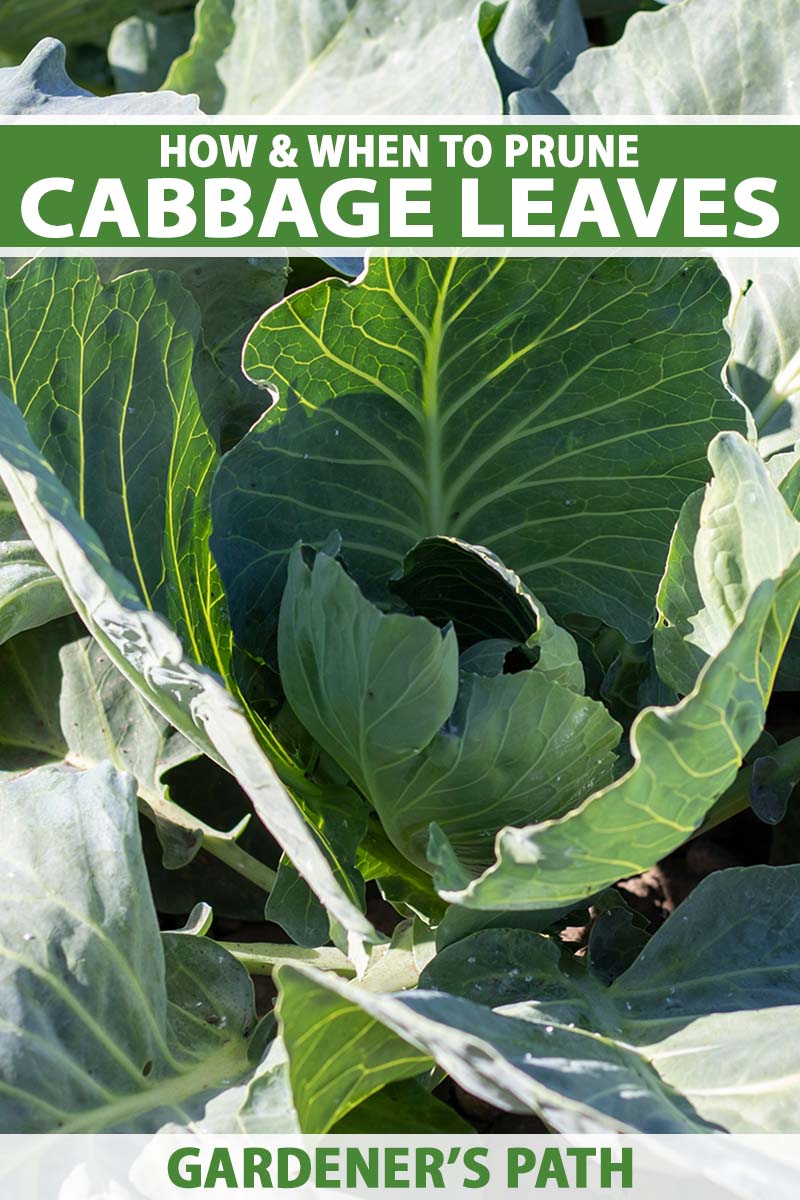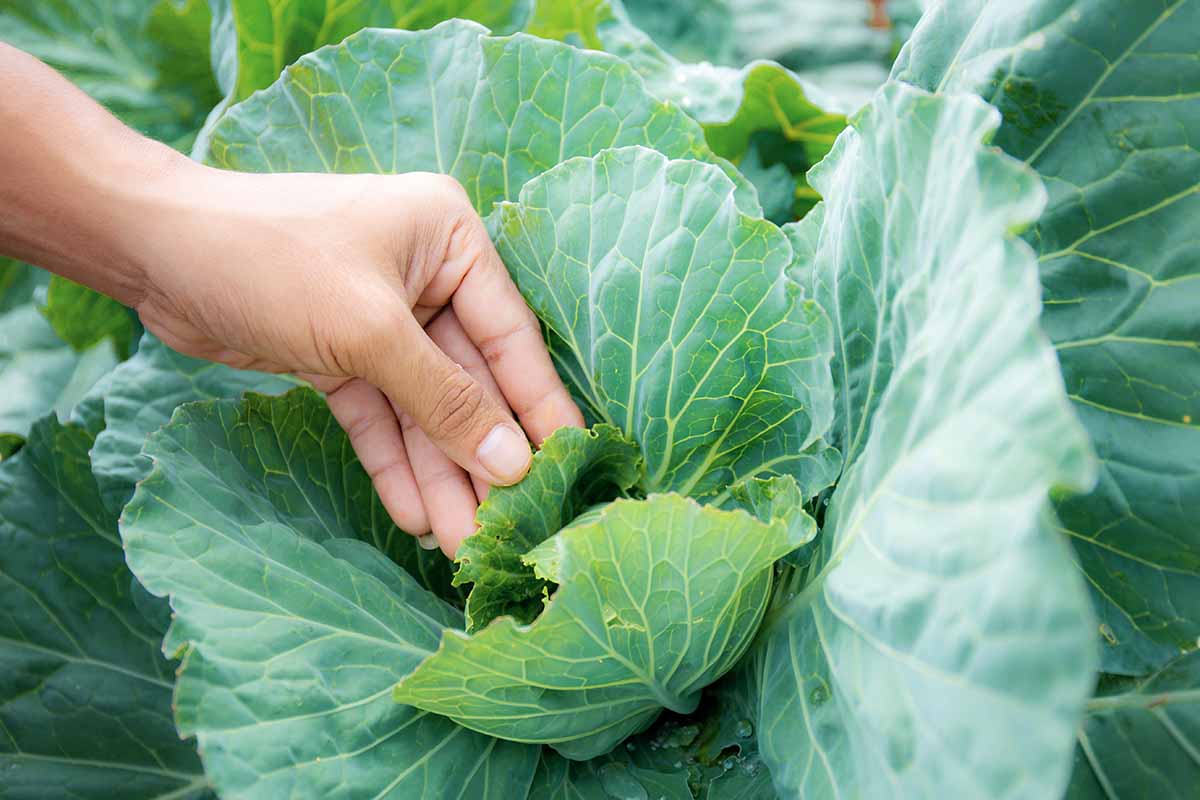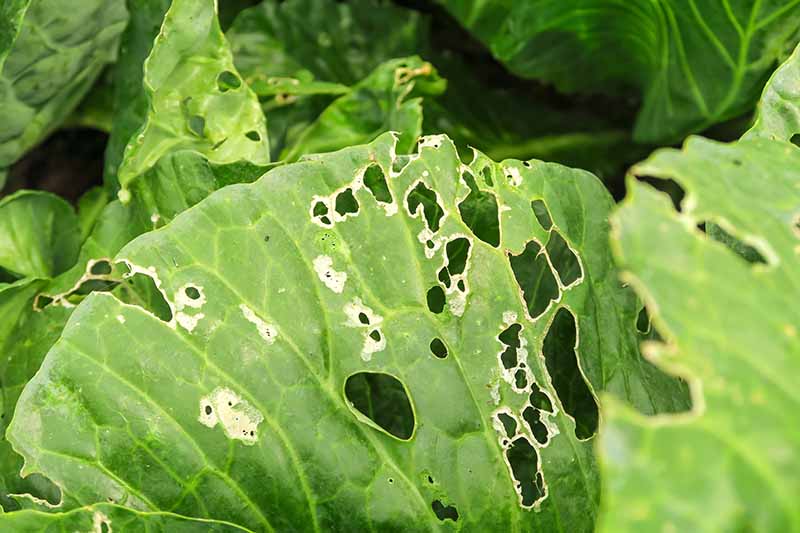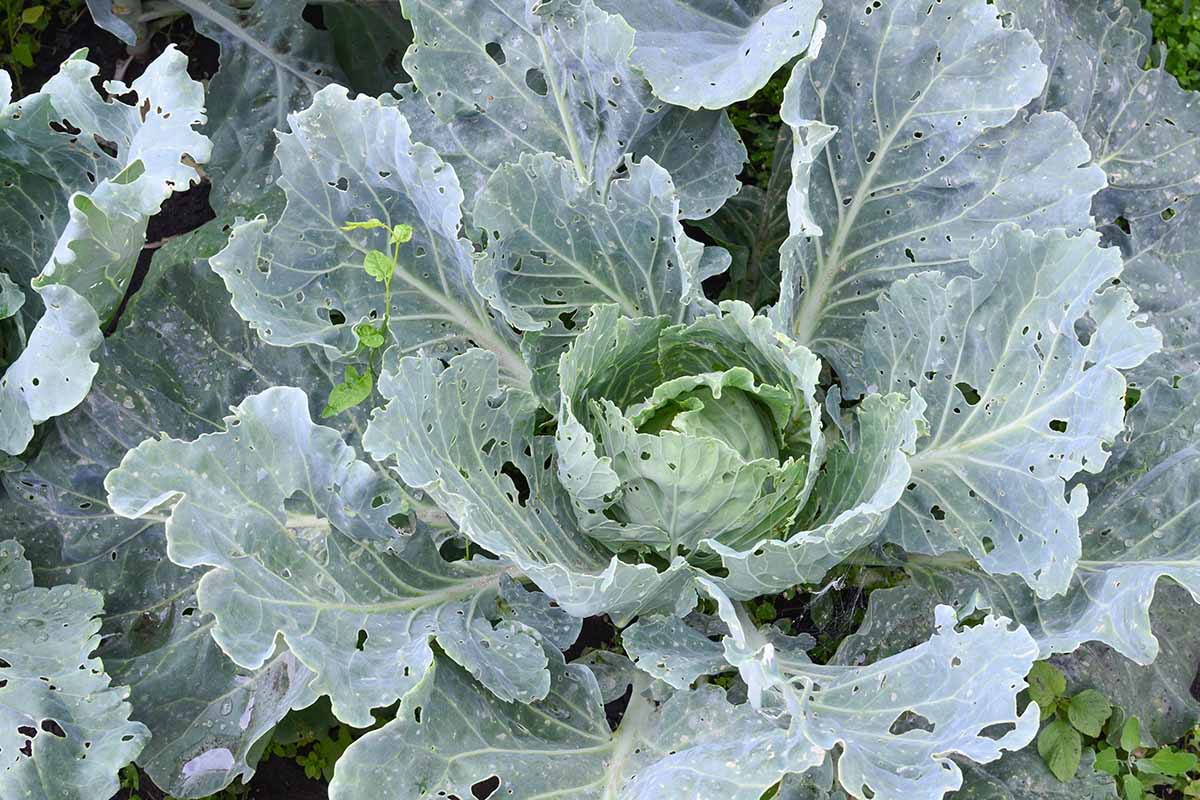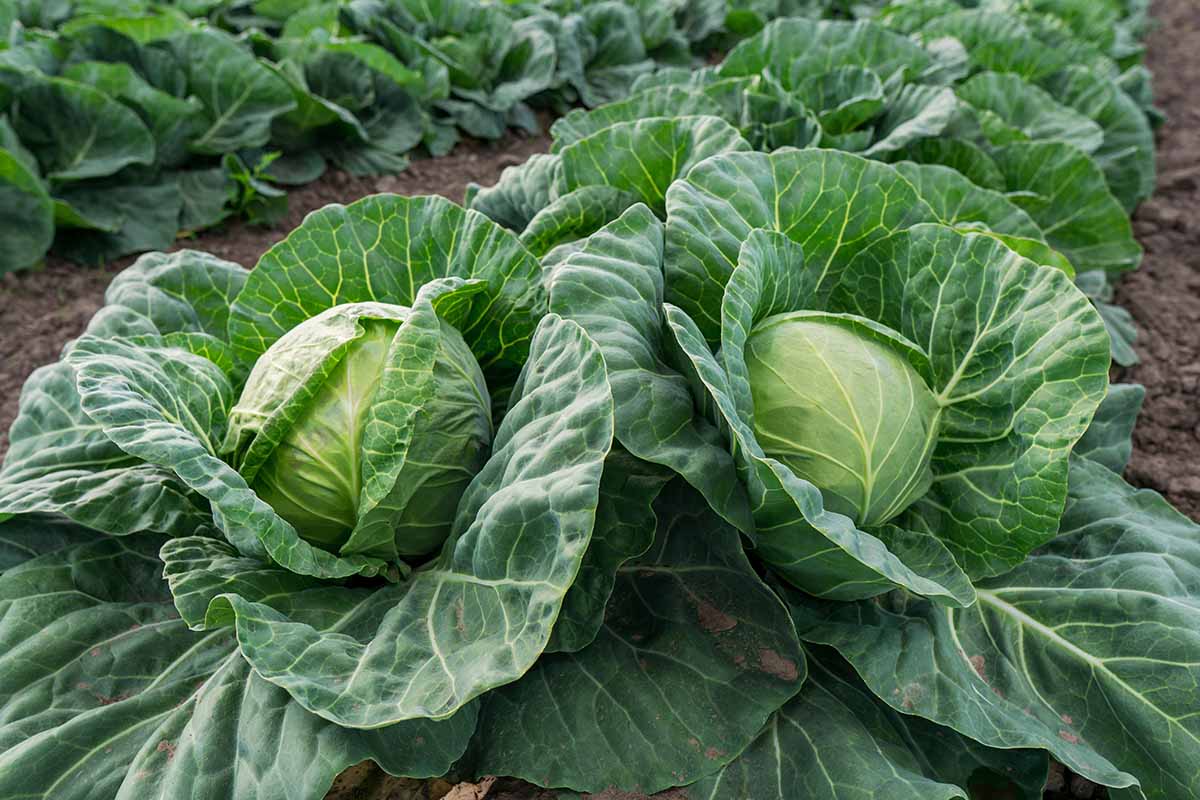It comes in so many colors, shapes, and sizes, with types suited for growing throughout the year. And how far the recipes have come, from the corned beef and cabbage of my youth that was boiled to mush! We link to vendors to help you find relevant products. If you buy from one of our links, we may earn a commission. Even if it was high maintenance, I’d be growing cabbage every year just because it’s so delicious and versatile from a culinary standpoint. Fortunately for me, there isn’t really a ton you need to do to cultivate your own beyond watching for signs of pests and diseases. Having said that, there are times when you might want to step in and give them some extra love. Most of the time, you don’t necessarily have to prune cabbage leaves. It’s one of those garden tasks that is optional – unless there’s a pest or disease situation that needs to be addressed. If it comes time to do a little tidying up, there are a few things you should know about the process. Here’s what we’re going to talk about, coming right up: If you opt not to prune your cabbage, your crop will probably still be just fine and you’ll be harvesting big old heads in no time flat. But if you put in the extra effort, you could have bigger harvests or healthier plants than ever before. Here’s everything you need to know:
Why You Should Prune Cabbage
There are three main reasons to prune cabbage. The first is to remove damaged, diseased, or dead leaves that are just a drain on the poor plant. The second reason is to encourage the plant to form a head. Most times, the plants will form a head without much encouragement from you. But by trimming some of the outer leaves at the right time, you can encourage the plant to focus on developing the inner leaves. Brassicas form a head by pushing leaves out from the center. But if they feel like they’ve developed enough leaves, they might stop making new ones. The third reason is to help prevent pests or diseases from harming your plants. Slugs love leaves that are laying on the ground, so if you cut them off, you can discourage them from visiting. Too many leaves can also prevent air from circulating well throughout the plant, creating the perfect environment for disease pathogens to thrive.
When to Do the Work
You can prune the leaves any time you want so long as a head has started forming. Prior to that, the plant needs those outer leaves to feed the roots and the forming head. You can remove diseased or pest-damaged leaves at any old time, of course, to keep your crop healthy.
How to Prune
First things first, clean the heck out of your tools. Seriously. Brassicas are known for being particularly prone to diseases and you will be kicking yourself if you spread some pathogen from one plant to another without realizing it. You can use a 1:10 bleach to water rinse, or just scrub them well with soapy water. Now you can get dirty. Prune off any dead, dying, or diseased leaves. Look for holes, yellow or brown spots or streaks, or fungal bodies. Also, look for clusters of pests or masses of eggs. If you spot any, those portions of your crop need to go. If you’re pruning to encourage head formation or improve airflow, take off about a quarter of the largest, outermost leaves after the head has attained about half of its mature size. Remove any that are laying on the ground as well. You still want to allow most of the outer leaves to remain because they provide protection and nutrition to the forming head. By the way, if the snipped parts aren’t diseased or dead, you can eat them. Otherwise, feel free to toss them on the compost pile! I think those reasons combine to make these vegetables a popular cool-weather growing option. But if you want to take a few extra minutes to prune up your plants, you can make them healthier and happier, with rewarding results come harvest time. How do you like to use your delicious leafy heads? Do you have any fantastic recipes you’re willing to share? Put ‘em in the comments! Do you feel more confident about how to handle your cabbages after reading this guide? If so, you might find a few of our other guides useful. Here are a few to check out next:
How to Grow Winter Cabbage for a Late-Season HarvestHow to Plant and Grow Napa (Chinese) CabbageTry These Fixes if Cabbage Heads Split
